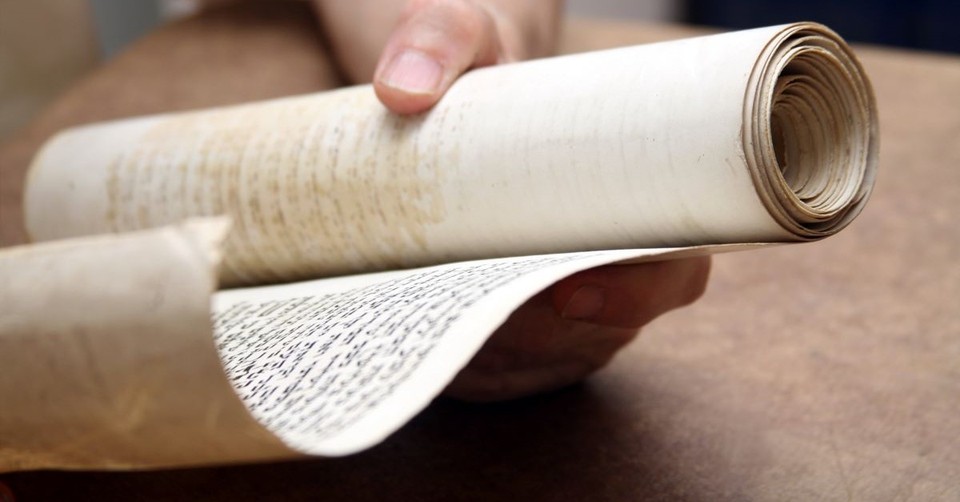Why Is it Important for Christians to Know More about Tyre?

There are heaps of cities in the Scriptures which, I confess, I do not know how to pronounce their names. And the likelihood of me accurately placing it on the map would likely increase if you blindfolded me, spun me around three times, and had me point at random. I’m not so good at geography. And yet, I’m a pastor—one who is supposed to speak with authority and not uncertainty. My only hope is that I’m not alone in my lack of confidence in how to both pronounce and locate these cities in the Bible.
In the book of Amos, the city of Tyre is one of those that fall under the prophet’s indictment. It’s also one that, without study, I’ve never really been confident about how to pronounce or place on a map. If you’re curious, it’s pronounced “tire,” like the rubber things on your car. But where is it located, and why does it matter? We’ll tackle those questions today.
Where Was Tyre?
Tyre in the biblical times is in the same location as Tyre is today. It is in the modern nation of Lebanon. If your geography is as good as mine, then I didn’t make it clearer for you. If you grab a map and find the Mediterranean Sea, you are close to finding Tyre. To the east of the Mediterranean, you’ll find Egypt, Israel, and Lebanon. Lebanon is to the North of Israel. And the city of Tyre is in the Southern part of the country—almost touching Israel. It’s only about 100 miles to the north of Jerusalem.
Tyre was a very important city in the ancient world. It was one of the leading cities of the Phoenician civilization. Their expertise in shipbuilding and navigation led them to become an international trade network. One of its more famous exports was purple dye.
It was on the border with the tribe of Asher but doesn’t really appear to have been in contact with the Israelites until the time of David and Solomon.
Where Does Tyre Appear in the Bible?
The first mention of Tyre is in connection with the tribe of Asher (Joshua 19:24-31) and that it was one of the cities Joshua was unable to capture (Joshua 13:3-4). But it seems that their early squabbles did not lead to a long-term feud. Tyre next appears during the time of David as those who helped to build the palace of David and eventually the temple. The famed cedars of Lebanon likely went through the hands of Hiram, king of Tyre, before coming into the Holy Land.
This tight bond with the Phoenicians also led to the downfall of the Israelites. It was through a treaty with the king of Sidon (Tyre’s close neighbor) that the infamous Jezebel entered into their story. She, through the weak King Ahab, helped to enshrine idolatry into the nation.
Tyre was known for its wickedness and idolatry. Ezekiel devotes an entire chapter to denouncing the city (and, by extension, the Phoenician culture of idolatry). Ezekiel focuses upon the pride of Tyre as well as the impact of her international trade and success. When he turns his focus upon the king of Tyre, some have likened it to the fall of Satan.
Their wickedness caught the attention of more than Amos and Ezekiel. They appear in Isaiah, Jeremiah, Joel, and Zechariah as well. When Jerusalem was restored after the exile, they appeared once again—as those who are selling on the Sabbath. Once again, their lust for profit seems to have been present. They are so notorious that Jesus uses them as an example of one of the most wicked of ancient cities (Matthew 11:21-22) that failed to repent. Jesus said that even if such a wicked place as Tyre had witnessed the works of Jesus, they—unlike the religious leaders of Jesus’ day—would have repented. His words prove to be true. Jesus ministered in Tyre (Matthew 15:21-28), and eventually (Acts 11:19), a church was planted there.
What Did They Do in Amos’ Day?
The prophet Amos, a Judahite and outsider to the nation of Israel, had the Israelites in his crosshairs. In order to draw them into the story, though, he had to evoke their sense of justice. He painted a circle around all of Israel’s neighbors. Moving from the Northeast (Damascus) to the Southwest (Gaza) and now to the Northwest (Tyre). Each had not only done harmful things to the Israelites, but many of them, like Tyre, were known for their wickedness.
When wickedness isn’t dealt with, it creates a problem for a God who claims to be not only a just God but also a global God. That the wickedness and idolatry of the Phoenicians weren’t dealt with—called into question whether or not God really cared about justice. Was he really the God over these nations as well? Would he judge them? Would he be faithful to his promise to Abraham to curse those who cursed Israel? Tyre was one whose iniquity demanded a response.
Specifically, Tyre was called out by Amos for their involvement in the slave trade. Like Gaza, they, too, had delivered up a whole people to Edom. But for Tyre, there is something added. They also “ignored a covenant of brotherhood.” What is this referencing?
There was at least some sort of deal between King David and King Hiram (2 Samuel 5:11) and an explicit treaty between Hiram and Solomon (1 Kings 5:26). But if this treaty was broken, would it mean that those who were “delivered up” to Edom were Israelites? Perhaps the treaty broken isn’t a formal treaty but common decency that ought to be afforded our fellow humans. We cannot be certain. Shalom M. Paul has a helpful comment:
Once again, the referent is left unidentified to place the emphasis upon the deplorable act itself rather than upon the specific party affected. Thus, although the prophet may have had Israel in mind, his indictment does not preclude the possibility that he was actually referring to another nation. In the long run, the nation itself is inconsequential. “It is the right common to humanity at large which he [Amos] vindicates and defends.”
It appears that their love for economic gain propelled them into the business of man-stealing. Rather than using their strategically positioned port city to create human flourishing for all of humanity, they used it to victimize some and prop up others. This serves as a warning for any people or nation who would pursue economic gain at the expense of the vulnerable.
How Should We Respond?
Could we be guilty of similar crimes? We might not be actively participating in the slave trade. The specifics might be different. But is the heart similar? Will we sell out our “brothers” for the sake of a dime? Will we willingly acquire wealth upon the back of another?
Amos’ words here are meant to cause the Israelites to get hopping mad at the injustices that the city of Tyre has committed. We cry with them, saying, “How long, O Lord…”? Will wicked people always remain in positions of power? Will we perpetually have at-risk people prostituted instead of protected?
As we rightly grieve these atrocities and await God’s justice, Amos would have us remember that we, too, fall under indictment. It is not only “three sins of Tyre” but “three sins of Israel” as well. This is the lot of all humanity. It is only through union with the transformative power of Christ that we both receive justice and learn the ways of justice. It is here that we also receive grace in the place where we ought to receive justice. This happens because Jesus himself bears the penalty for our transgression. This, too, informs our understanding of justice.
We’re to interact with a text like this by allowing ourselves to grieve the real hurt caused by the Tyres around us. But we also realize that we are Tyre. And as we acknowledge this, we fly to Jesus for healing and forgiveness.
Photo Credit: ©GettyImages/tovfla
Mike Leake is husband to Nikki and father to Isaiah and Hannah. He is also the lead pastor at Calvary of Neosho, MO. Mike is the author of Torn to Heal and Jesus Is All You Need. His writing home is http://mikeleake.net and you can connect with him on Twitter @mikeleake. Mike has a new writing project at Proverbs4Today.
Originally published January 31, 2024.





